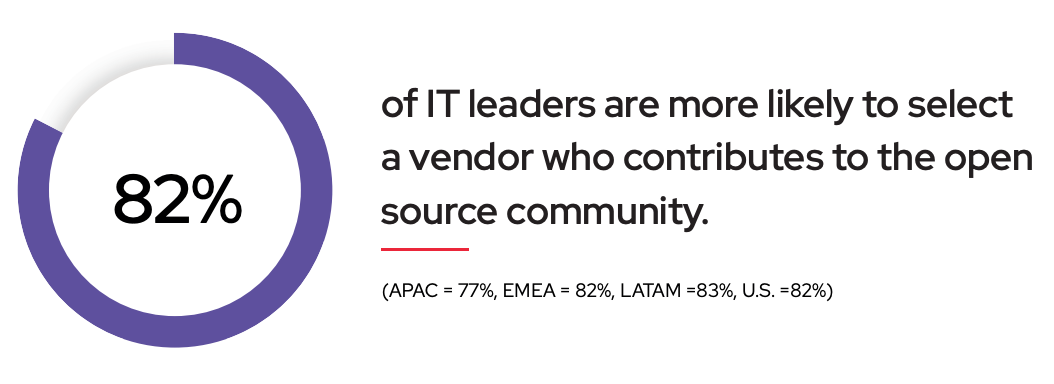
Enterprise IT Teams Are Increasingly Shifting to Open Source Solutions
by Fintech News Singapore March 24, 2022Businesses are increasingly shifting to open source software solutions to address COVID-19-related challenges and tackle new market demands for quality, speed and as well as an evolving cybersecurity landscape.
This is the finding drawn from a survey of nearly 1,300 IT decision makers at medium and large enterprises worldwide conducted by IBM subsidiary and open source software provider Red Hat.
The results, which are shared in the 2022 State of Enterprise Open Source report, show a clear improvement in enterprises’ perception and awareness of open source software, which many now view as a superior form of software with more innovation and better security than alternatives.
92% of IT leaders surveyed feel enterprise open source solutions are important to address COVID-related challenges, and 95% believe that enterprise open source is important to their organization’s overall enterprise infrastructure. These figures stand both at 95% for IT leaders in Asia-Pacific (APAC).
Shifting away from proprietary software
The survey also sought to understand if IT leaders cared about whether or not their tech vendors contributed to open source communities. The response was overwhelmingly positive, with a total of 82% of the respondents almost evenly split between saying they were “much more likely” and “somewhat more likely” to select a contributing vendor. In APAC, the number stood at 77%. These result showcase that enterprises’ preferences are shifting and that they are now privileging tech vendors involved in open source.

Do IT leaders care whether their vendors contribute to open source projects?, Source: 2022 State of Enterprise Open Source, Red Hat
When asked why enterprise open source vendors are preferred, IT leaders cited their familiarity with open source processes (49%), the belief that they are helping sustain healthy communities (49%), effectiveness in helping to face technical challenges (48%) and that they are helping to influence the development of features that they needed (46%).

Top reasons why enterprise open source vendors are preferred, Source: 2022 State of Enterprise Open Source, Red Hat
Results also show that businesses are increasingly moving away from proprietary software. Over the next two years, proprietary software as a percentage of the software already in use in respondents’ organizations is expected to drop significantly by eight points. In tandem, enterprise open source is projected to shoot up five points, with community-based open source also rising three points.

Expected change in software, Source: 2022 State of Enterprise Open Source, Red Hat
Security as a key benefit of enterprise open source
Organizations are increasingly moving to open source for a number of reasons, including the perceived level of security these software offer. The decision to adopt open source also comes oftentimes in unison with a desire to embrace new, cutting edge technologies, and as part of a broader digital transformation push.
32% of respondents cited security as the top benefit of using enterprise open source, neck and neck with higher quality software. 89% of respondents further indicated that enterprise open source software is as secure or more secure than proprietary software.
When asked why they believe security is a benefit of open source, 55% of respondents said their “team can use well-tested open source code for their in-house applications”, reflecting the increasingly widespread use of open code source code for internal applications.
Other top benefits cited include “security patches are well-documented and can be scanned for” (52%), and “vendors make vulnerability patches for enterprise open source available promptly” (51%), demonstrating the confidence that IT leaders have in how enterprise open source software is created and delivered in general.

Top benefits of using enterprise open source, Source: 2022 State of Enterprise Open Source, Red Hat
The research also found that adopting enterprise open source adoption is generally part of a broader push to modernize IT infrastructures (62%) and digital transformation efforts (54%).
Reflective of that is the proportion of IT leaders that indicated planning to use enterprise open source for new emerging technology. 80% of respondents said they are planning to increase their use of enterprise open source in areas such as artificial intelligence (AI), machine learning (ML), edge computing, and the Internet of Things (IoT).

Use of enterprise open source software for emerging technologies, Source: 2022 State of Enterprise Open Source, Red Hat
Featured image credit:Keyboard typing photo created by jannoon028 – www.freepik.com







